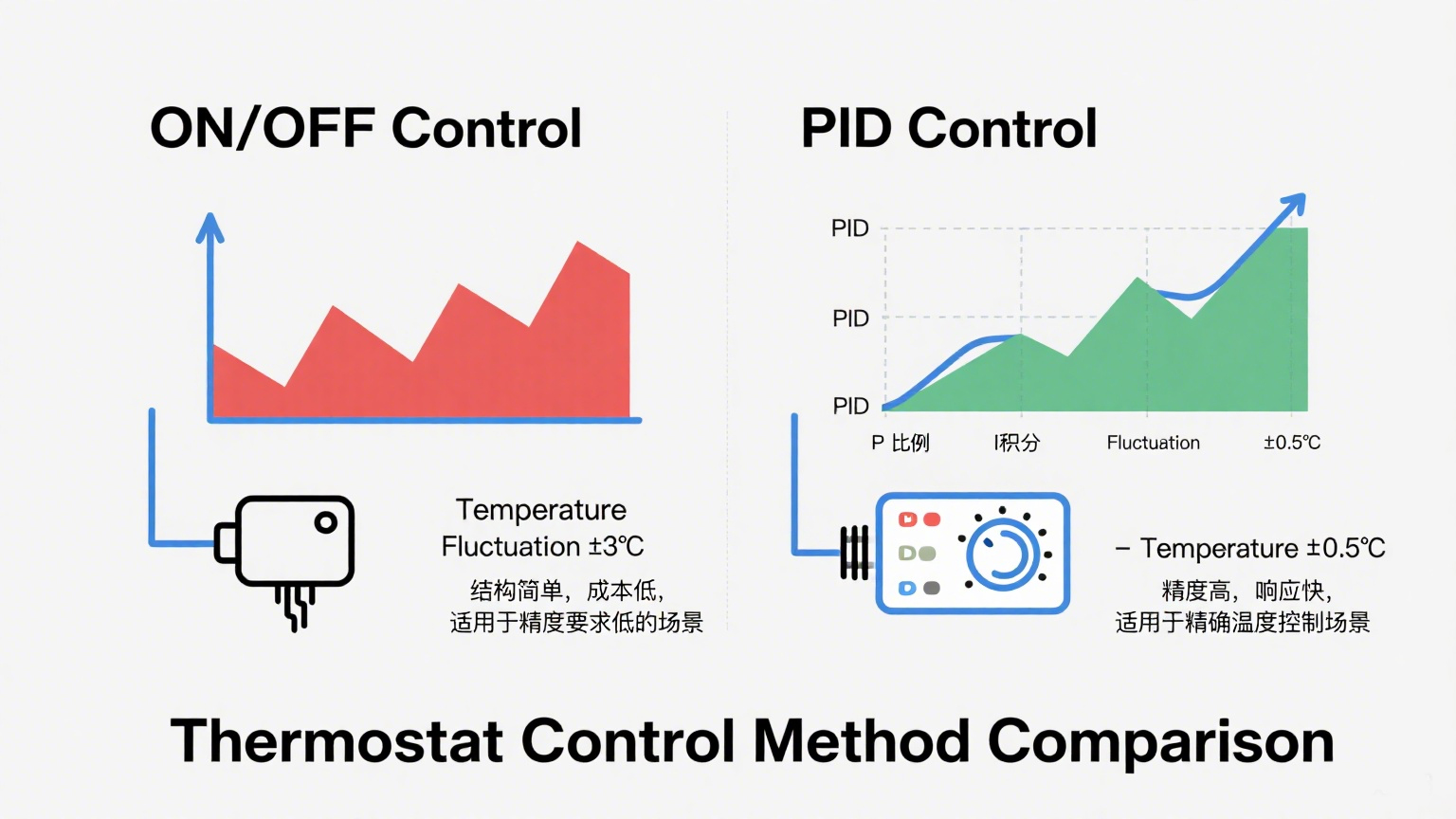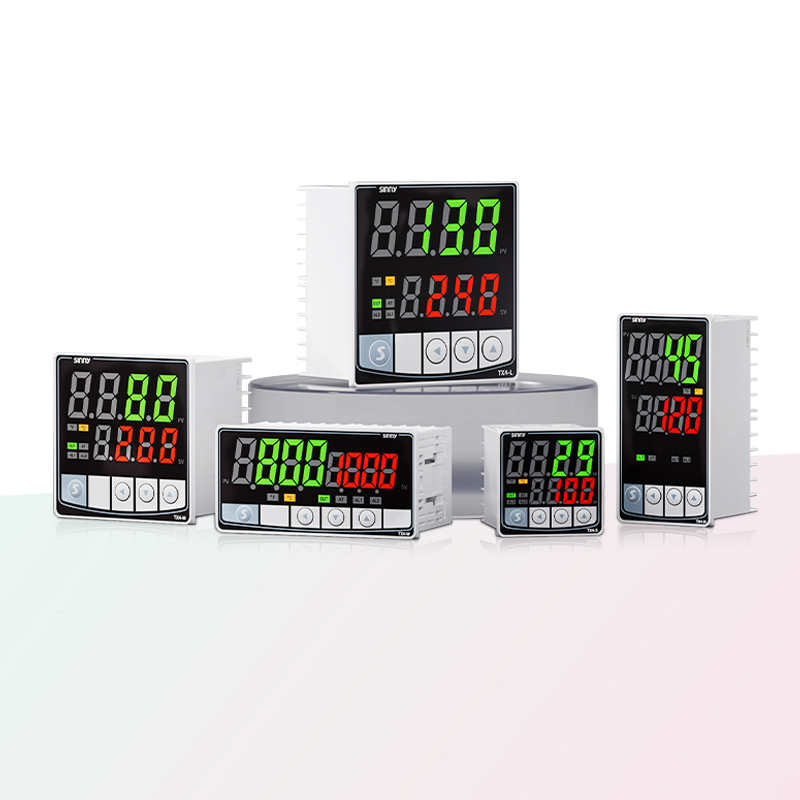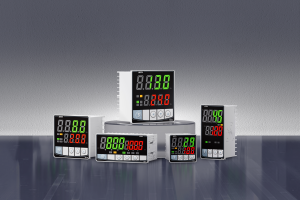How to correctly select the ON OFF PID temperature controller
1.what is on off control? what is PID control?
 what is on off control?-----on off temperature controller
what is on off control?-----on off temperature controller
Switch control is the simplest fully open or fully closed mode, commonly known as ON/OFF, without any interlocking gears, such as (valve opening and closing), which refers to the system providing full power until the desired target point is reached.
what is PID control?------ PID temperature controller
Switch control does not operate in a fully on or fully off mode. Instead, it flexibly adjusts the output force based on the actual situation to make the equipment faster and more stable. It is usually proportional/integral/differential control - commonly known as PID control
ON-OFF control system principle logic:
"According to the relationship between the controlled variable and the set value, the drive output switches between 'fully on' and 'fully off'."
For example, the refrigeration equipment at home: If you set the temperature value to 25℃, the cooling will automatically start when the temperature drops to 24℃, and it will automatically shut down when the temperature rises to 26℃. The key is to stabilize the temperature through the on and off cycle. There is a critical value here - the "dead zone", which is a small buffer zone. Only when it exceeds this zone will the system start to work, and the temperature will fluctuate back and forth within this zone The accuracy of this control method is generally between 2% and 5%
principle logic of PID control system:
Based on the target gap between the "actual value" and the "target value", it quickly switches and dynamically adjusts the output to make the controlled parameters stabilize rapidly with small fluctuation values (the coordination of the three links of proportionality (P), integration (I), and differentiation (D)), achieving the actual target value
Proportion (P), integration (I), and differentiation (D), we simply refer to them as the "three little helpers". First, we need a target value (suppose the target value is 60℃), and an actual value (65℃). Then their error values are 5℃. PID is used to adjust this error value, making the difference smaller and smaller until it reaches the target value and stabilfies within the target range

2. How to choose different control methods based on one's own needs and understand their working principles and differences
We know
The working principle of ON/OFF is; "Trigger - Execute - Stop - Trigger again"
The working principle of PID: Fluctuation adjustment between the actual value and the target value
What are their respective advantages?
Firstly, the on-OFF control mode of the Temperature Controller has an advantage in terms of cost -cos Temperature Controller
Like our household water heaters for boiling water, fish tanks for heating, electric irons, household refrigerators/freezers, household refrigerators/freezers
The ac switch heater controller of the water heater only requires ON/OFF control, which is completely sufficient. It is also fully competent for the heat and cool function of the refrigerator. It has no complex structure. "Turn off when the temperature is high and turn on when it is low". The main features are simple operation, low failure rate, strong durability, low cost and high cost performance.
The PID control mode mainly features precise temperature control, fast response speed, stable temperature difference without fluctuation, and small deviation. It is highly suitable for scenarios where the temperature control environment is prone to interference. Because there are more components inside than ON-OFF controllers and more functions, it has a significant control advantage, so its price is higher than that of ON-OFF controllers. Of course, some thermostats have both PID control and ON-OFF control. Our sinny TX4 Temperature Controller has both of these temperature control methods at the same time, and the operation is also very simple.

Practical operation: Switching between ON/OFF control and PID control
The interface description of our sinny thermostat is very simple, without complex operations. How to manually adjust the control mode of the S key, up, down, right keys, and PV SV alarm parameter values?
First, we need to enter the manual adjustment mode. Hold down the down key for 3 seconds. At this time, the PV screen shows P-1. Then press the up key, P-1 changes to p-2, and then click the S key to enter the parameter group 2 menu. Keep tapping the S key six times until P1d is displayed ON the PV screen. This parameter is used to switch between PID and ON/OFF control modes. At this point, you can switch control modes freely
Summary: "ON" or "OFF" just means it can be heated
PID control: It must be fast, accurate and stable.
3.FAQ
What are the different control methods for thermostats?
PID control and ON/OFF control
In which scenarios are thermostats generally used?
In daily life, one pursues ON/OFF control
PID control is pursued in industrial production, scientific research experiments, medical care and agriculture





















